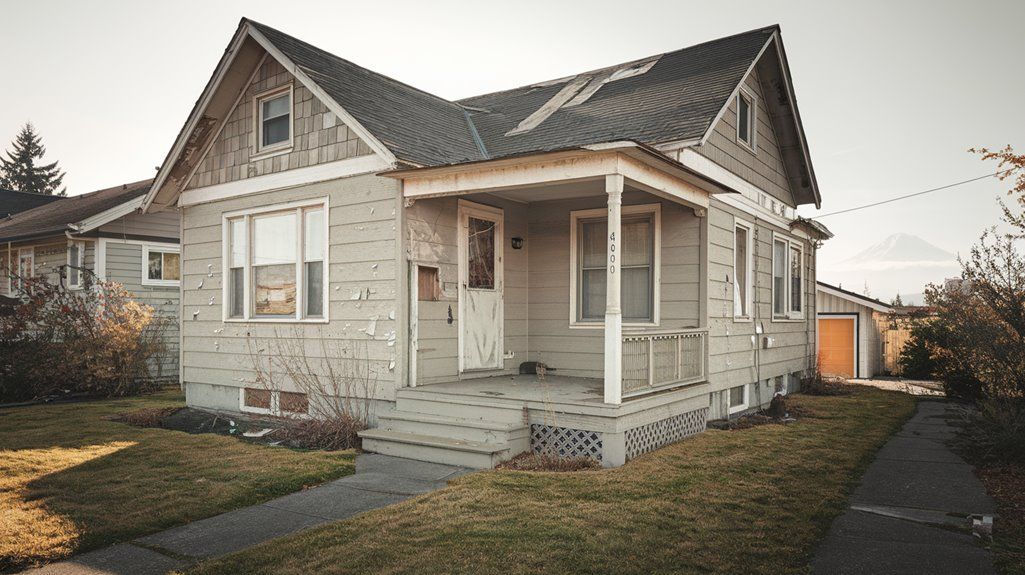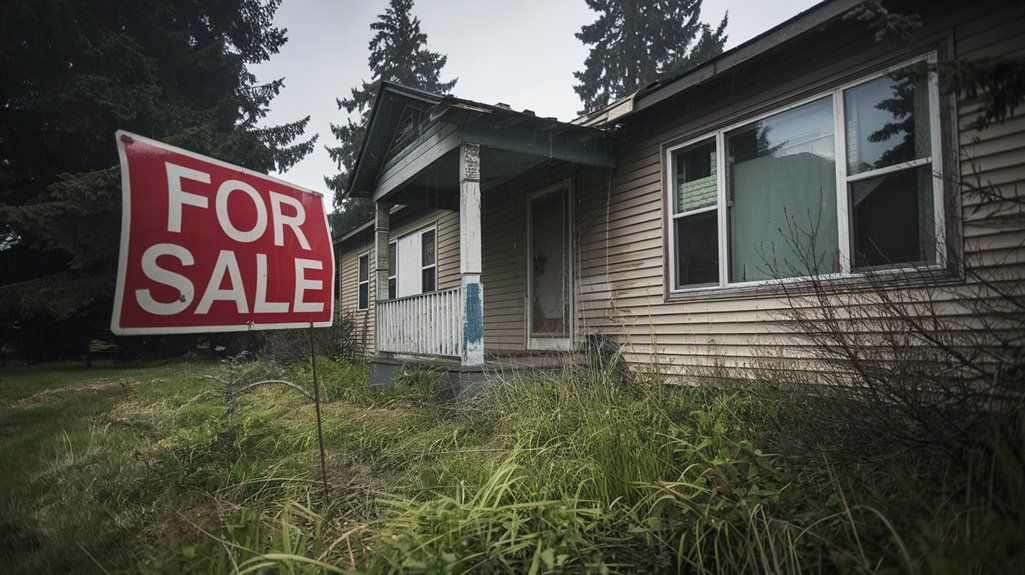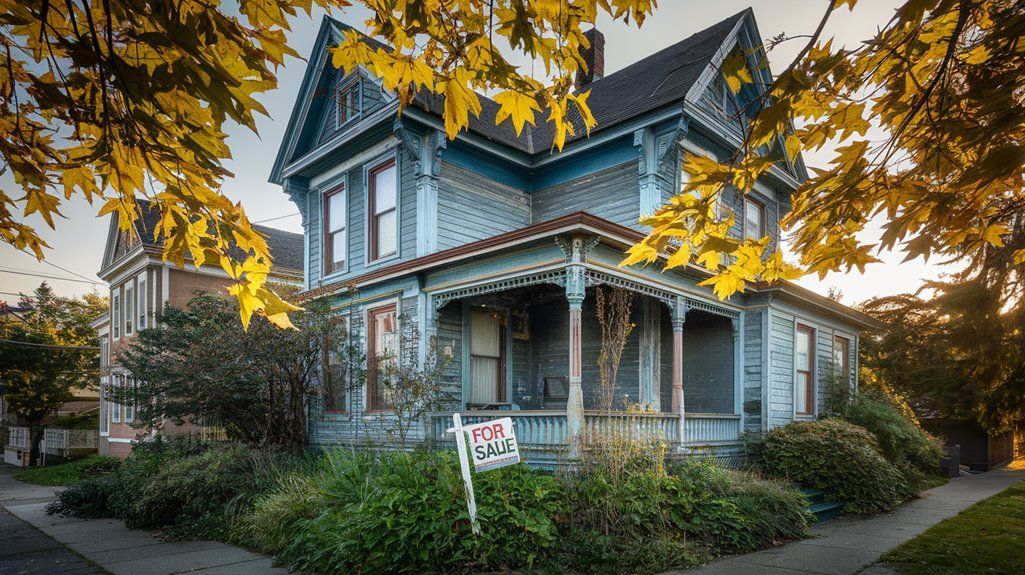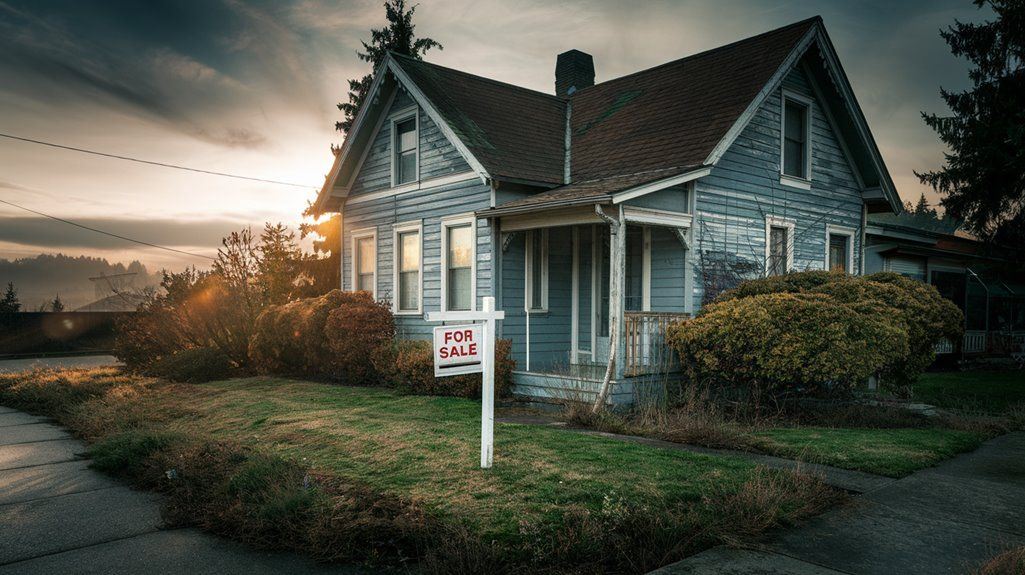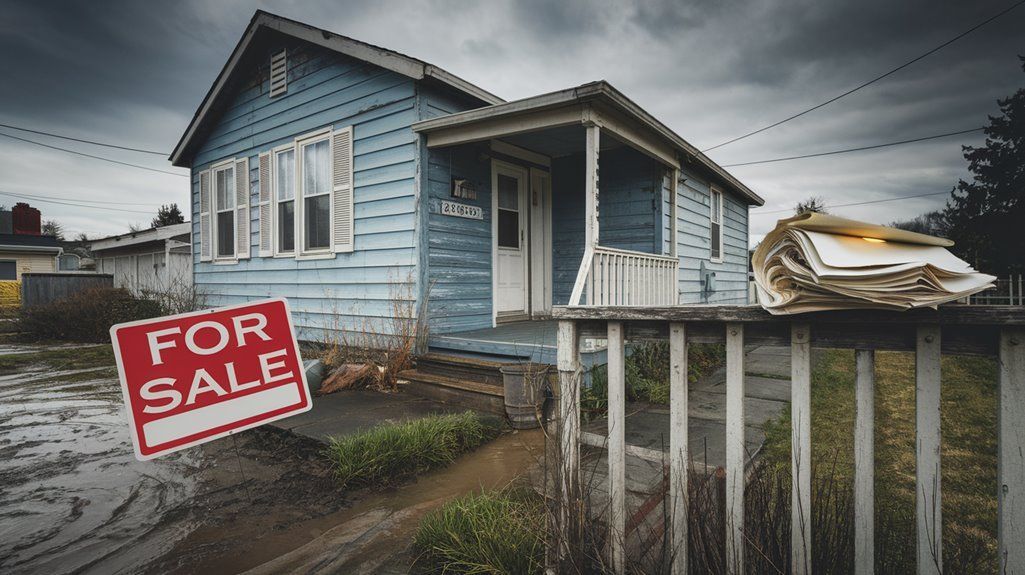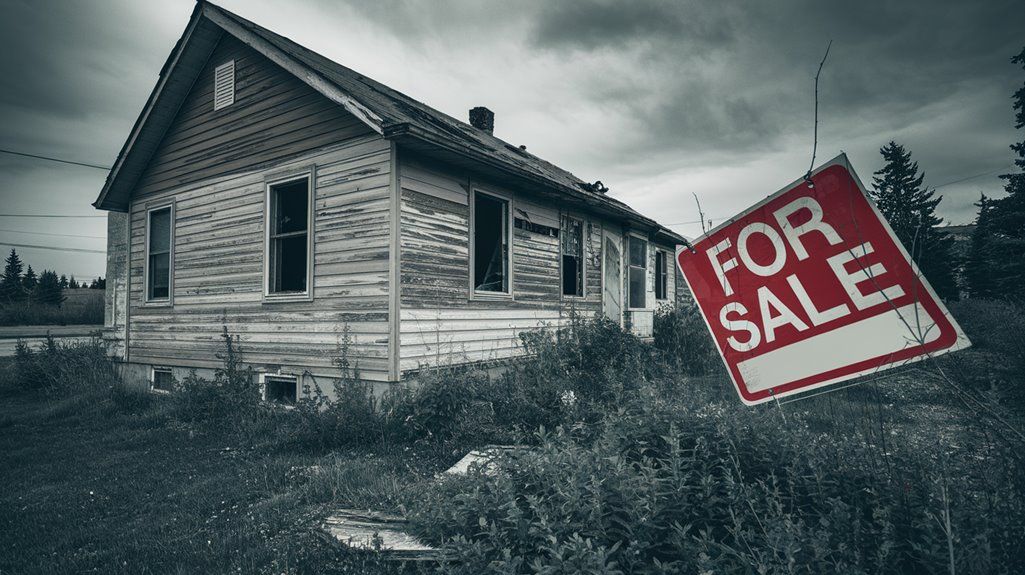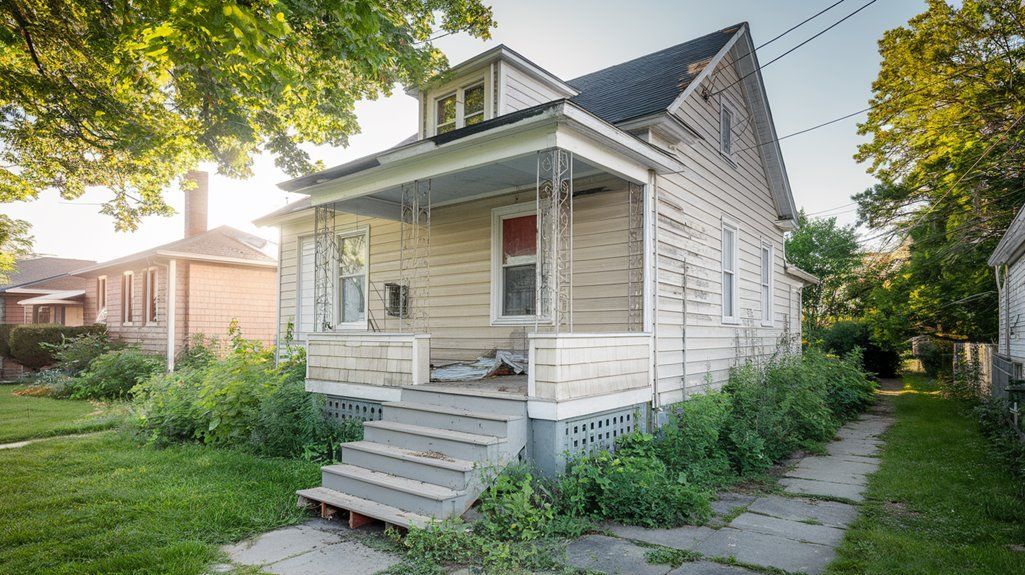How to Sell a House That Has Flooded
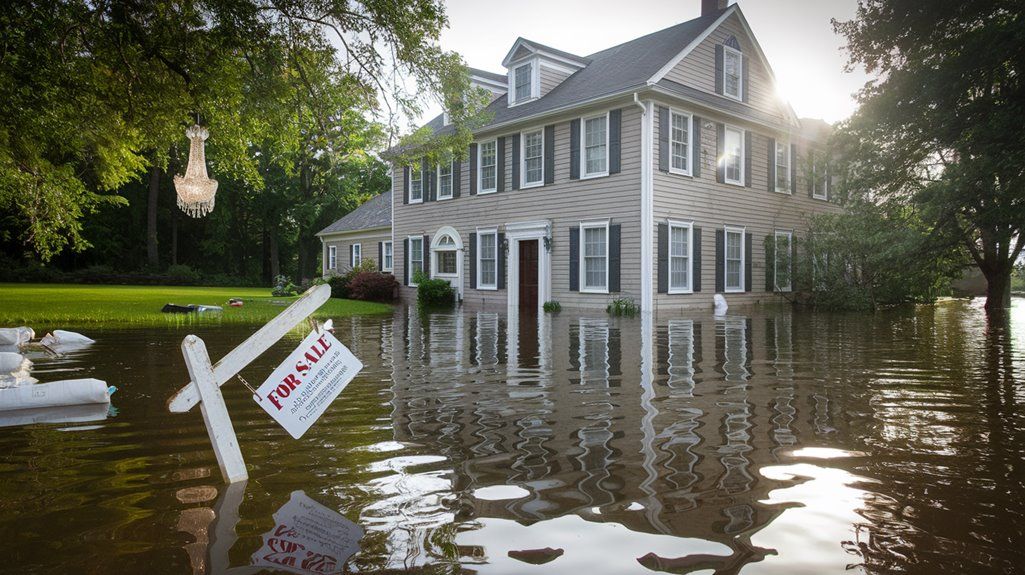
Selling a flooded house creates significant challenges for homeowners in today’s real estate market. You must deal with structural damage, mold issues, and decreased property value. Most sellers feel overwhelmed when facing these problems, especially since regular buyers often avoid flood-damaged properties.
Since flood damage can reduce home values by 15-40%, many homeowners struggle to find qualified buyers. You might feel stuck between expensive repairs and accepting substantial losses. Moreover, insurance complications and disclosure requirements add layers of complexity.
Your best options include selling to cash buyers, investing in restoration, or targeting specific investors who renovate damaged properties. This guide will walk you through proven strategies to sell your flood-damaged house effectively and maximize its value.
Key Takeaways
- Document all flood damage thoroughly with photos, videos, and written descriptions to maintain transparency and meet legal disclosure requirements.
- Consider selling to cash buyers or investors who specialize in flood-damaged properties to avoid lengthy repairs and financing complications.
- Price the property competitively below similar non-flooded homes, typically 15-40% lower, to reflect damage and attract potential buyers.
- Create a detailed record of all repairs, improvements, and flood prevention measures installed after the incident.
- Consult with a real estate lawyer familiar with flood property cases to ensure compliance with local disclosure laws.
What are the Challenges of Selling a Flood-Damaged Home
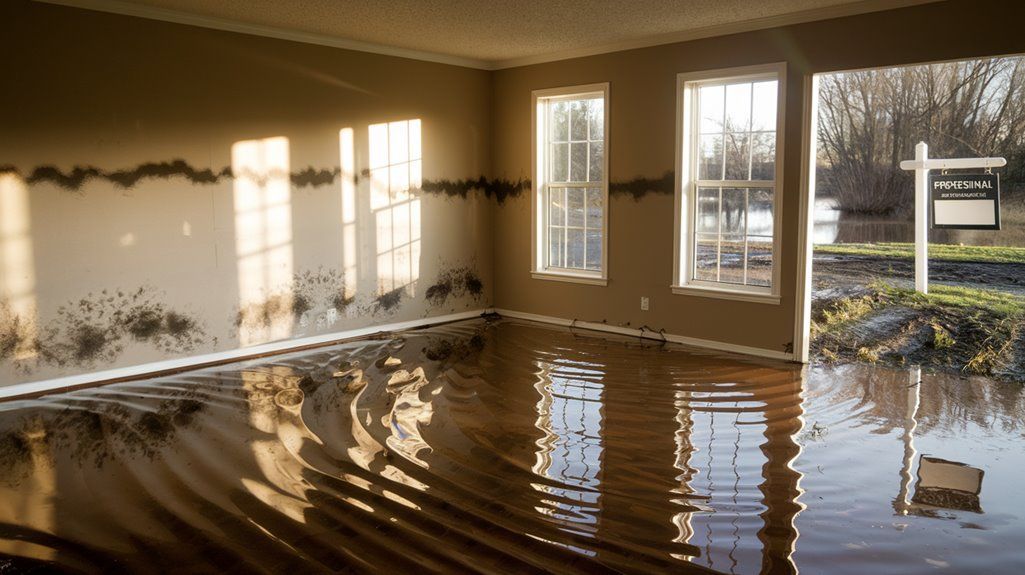
Selling a flood-damaged home presents major hurdles for property owners in today’s real estate market. It often requires extensive documentation and specialized knowledge of damage repair. You will face tough questions about the property’s structural safety and long-term value.
If buyers discover past flooding issues, they might demand deep price cuts. The electrical systems and foundation stability remain top concerns for potential buyers. We must address all health risks from water damage, especially toxic mold growth. Lenders typically require proof of proper repairs before approving loans for flood-damaged properties.
This limited financing option shrinks your pool of potential buyers significantly. When dealing with flood history, complete transparency becomes essential for legal protection. Your home’s value could drop if future buyers worry about repeated flooding risks. Insurance costs will likely increase due to the property’s flood history.
If you make all necessary repairs, some buyers might still avoid previously flooded homes. So, patience and realistic pricing remain key factors for successful sales.
How to Prepare Your Flood Damaged House for Sell
Preparing your flood-damaged house for sale requires a systematic approach that starts with a thorough assessment of all affected areas and professional documentation of the damage.
You’ll need to understand your state’s disclosure requirements regarding flood damage to ensure legal compliance and maintain transparency with potential buyers.
Based on the assessment findings, you can then develop a strategic repair plan that addresses structural issues, mold remediation, and cosmetic repairs to enhance your property’s market value.
Assessing the Damage
Assessing flood damage requires a complete property evaluation to determine repair needs and selling options. You must document all damage with clear photos and videos of affected areas. This evidence helps with insurance claims and cost calculations. We recommend focusing on walls, flooring, foundation problems, and electrical damage.
If structural issues exist, you should hire a flood damage specialist for inspection. The expert will check for hidden problems and potential mold growth. This professional report will outline all necessary repairs for the property.
When selling a flood-damaged house, you need proper documentation for buyers. Your records should include repair receipts and insurance claim papers. These documents will help buyers understand the property’s history.
So, a thorough assessment will determine if you should restore or sell as-is. If the damage is extensive, selling without repairs might be more practical. This decision depends on your budget and market conditions.
Documenting the Flood Damage
Documentation of flood damage requires three key steps: photographs, videos, and written records. You must take clear photos of all water-damaged areas in your property. This includes close-up shots of water marks and mold spots. The exterior damage needs careful photo documentation as well.
We recommend recording a video while walking through each affected room. You should describe the damage clearly during the video recording. If you maintain good visual proof, insurance claims become easier to process.
A detailed written list helps track all items affected by flooding. This list should mention structural problems and damaged systems in your home. You will need dates and specific information about when the flooding occurred.
Licensed contractors can provide estimates for repairs and replacements. It is essential to keep all receipts from flood-related expenses. If you store these records both online and in paper form, you will be prepared for insurance claims.
While dealing with insurance companies, proper documentation makes the process smoother. Since digital copies provide backup, you should scan all important papers. Hence, buyers and insurers can access the information whenever needed.
Understanding Disclosure Requirements
Legal disclosure requirements establish rules for selling properties that have experienced flood damage. These rules differ from state to state. You must learn about your local laws on water damage disclosure. This knowledge will protect both parties in the transaction.
If you plan to sell your property, you should reveal all past flood incidents. You need to tell buyers about previous repair work and water damage history. We recommend sharing details about flood zone classification and insurance claims. This information helps buyers make informed decisions.
When issues like dampness or mold exist, you must report them honestly. Since hiding these problems can lead to legal trouble, transparency is essential. If you skip these requirements, courts may cancel the sale. You should work with a real estate lawyer who knows flood property cases. This expert will guide you through all disclosure steps correctly.
Repairing the Flood Damage
Flood damage repairs must begin quickly to restore your property’s worth. You should file insurance claims and take photos of all damaged areas immediately. A professional assessment will help document the extent of the damage.
We need to start flood control measures right away. It will prevent more damage to your property. You must remove standing water with pumps and professional equipment. Your home needs industrial dehumidifiers to dry out wet areas fully.
If you spot any mold, remove it at once. You should replace damaged walls, floors, and insulation with new materials. This step includes checking all electrical systems and plumbing for safety. When rebuilding, you could choose water-resistant materials for better protection.
Licensed flood restoration experts will ensure quality repairs. They know local building codes and proper repair methods. You must keep records of all work done on your property. These documents will help buyers understand the restoration process better.
If you invest in proper repairs now, your property value will increase. So, work with proven contractors who specialize in flood damage repair.
Selling Strategies for a Flood-Damaged House

When selling a flood-damaged house, you’ll need to decide between two main strategies: making full repairs before listing or selling the property “as-is.” Selling after completing repairs can help you command a higher price and attract traditional buyers, though you’ll need to invest significant time and money upfront.
The “as-is” approach typically means a faster sale and less initial investment, but you’ll likely need to accept a lower price and market primarily to investors or renovation-minded buyers.
Selling After Full Repairs
Full repairs can maximize your home’s value and attract more potential buyers in the market. You must document each repair phase with detailed photos and relevant paperwork. This includes collecting all contractor invoices and building permits for the work.
When you research local market prices, consider both your improvements and neighborhood values. It helps determine a competitive listing price for your property. This strategy will align your home’s worth with similar properties nearby.
If you install flood prevention systems, highlight these important safety features to buyers. We recommend showcasing upgrades like sump pumps and improved drainage solutions. You should maintain full transparency about past flood issues with potential buyers.
It is essential to keep current flood insurance details ready for interested buyers. This information will help buyers understand future coverage and associated costs. If you present all repair documentation clearly, buyers will feel more confident about their purchase.
Selling “As-Is” Without Repairs
Selling a flood-damaged house “as-is” provides a quick solution for homeowners who need immediate results. You must set competitive prices based on the extent of flood damage. This option works well when repair funds are limited or time is short.
You should disclose all flood-related issues to potential buyers upfront. We recommend providing complete documentation of flood insurance claims. It helps create trust with interested buyers. If you show repair estimates, buyers can better understand future costs.
This strategy often appeals to investors seeking renovation projects. You can focus on reaching out to property developers and renovation experts. The property’s core features like location remain valuable selling points. While the damage affects value, good location and lot size still matter.
If you want accurate pricing, multiple professional assessments are essential. So, these evaluations will help set reasonable asking prices. When buyers see fair prices, they are more likely to make offers. This approach balances current conditions with market expectations.
How Flood Damage Affects Home Value
Flood damage leads to significant drops in home market values, ranging from 15-40% below original prices. You will notice the most severe price reductions when floods cause extensive structural problems. This type of damage affects both the interior and exterior of homes.
If your house has experienced flooding, buyers will hesitate to make strong offers. The flood history must be disclosed to all potential buyers during sales. Your property’s location in flood-prone areas will affect insurance costs and buyer interest. We can see that lenders have become more careful about approving mortgages for homes with flood histories.
You should keep detailed records of all repairs and improvements made after flooding. These documents will help support your home’s value during sales negotiations. If you install flood prevention measures, the impact on property value might decrease. Insurance companies will offer better rates when homes have proper flood protection systems.
Pricing Competitively in a Tough Market
Since competitive pricing is vital in a flooded property market, you must set realistic prices. You should start with a detailed study of similar flood-affected homes sold nearby. This research will help you set a fair price for your property. We recommend getting several expert opinions to confirm your pricing strategy.
If you want to attract buyers, you should price your home below non-flooded properties. Your asking price must reflect both current damage and future repair costs. This discount typically ranges from 20% to 30% off standard market rates.
While emotional ties might affect your judgment, market facts should guide your decisions. You need to balance between your expectations and current market demands. So, a practical approach to pricing will increase your chances of finding a buyer.
Consulting Real Estate Professionals for Valuation
Real estate agents provide vital help when valuing flood-damaged properties. You should work with professionals who understand distressed property sales. These experts know how flooding affects home prices in the market.
When selecting an agent, look for someone with flood property experience. They must know local flood zones and insurance rules well. A qualified agent will compare prices of damaged homes in your area.
If you want accurate pricing, consider getting opinions from multiple agents. They will analyze repair costs and current market trends carefully. Since buyers have specific concerns about flood damage, agents factor these into pricing.
You can trust experienced agents to set competitive prices for flood-damaged homes. So, they will study recent sales of similar properties in your region. This research helps determine a fair market value for your property.
If the damage is extensive, agents will adjust their valuations accordingly. We recommend working with local experts who know your specific market. These professionals understand how flooding impacts property values over time.
Marketing a Flood-Damaged Home for Sell

Marketing a flood-damaged home requires a strategic balance of transparency and optimism, where you’ll need to showcase the property’s enduring qualities while being upfront about its flood history.
You’ll want to emphasize positive features like location, lot size, or architectural elements that weren’t compromised by the flooding, while providing detailed documentation of completed repairs and improvements.
Focus your marketing efforts on investors, renovators, or bargain-hunters who have the vision and resources to appreciate the property’s promise despite its past challenges.
Highlighting the Positive Features
Every property has unique selling points that can attract potential buyers after flood damage. You should focus on key features like location and lot size to market your home. This approach helps buyers see beyond the flood-related concerns.
The neighborhood amenities and strong architectural details remain valuable assets. Your pre-flood improvements can still add significant value to the property.
We recommend highlighting practical benefits such as the spacious floor plan and mature trees. If you have fixed flood damage, these repairs demonstrate your commitment to restoration.
The updated drainage systems show buyers that you took preventive steps. Your property might qualify for lower flood insurance due to safety upgrades.
This home’s position in a historically low-risk area can reassure potential buyers. So, when you showcase the house, make sure to point out these advantages. If your utilities are now elevated, this improvement adds extra protection against future floods.
Being Transparent About the Damage and Repairs
Being transparent about flood damage helps protect sellers legally and builds buyer trust. You must share all flood-related problems in clear written documents. When listing damages, include photos and repair receipts from professionals.
We recommend disclosing every water issue that has affected your property. If you have fixed certain problems, show proof of the completed repairs. This approach will help buyers understand the property’s history better.
You should provide copies of insurance claims and related paperwork. Since flood zones can change, inform buyers about current zoning status. When municipal rules affect the property, make these requirements clear to potential buyers.
If waterproofing systems were installed, share the installation details and maintenance records. The documentation should include information about drainage updates and mold treatment. So buyers can make informed decisions about their investment.
This honest communication prevents future legal problems and builds credibility. While some issues might seem minor, full disclosure protects all parties involved.
Targeting the Right Buyers
You need to find specific buyers for flood-damaged properties. We recommend focusing on investors who regularly purchase distressed homes. If you connect with property flippers, they can turn your challenge into an opportunity.
This market segment includes three main buyer types: investors, contractors, and DIY enthusiasts. Investors want to find below-market properties for profitable resale. Contractors seek projects where they can use their skills effectively. You will find DIY enthusiasts looking for affordable homes to renovate themselves.
When you focus on investment groups, your chances of selling increase significantly. So, start by joining local real estate investment associations. This approach helps you reach buyers who understand property restoration.
If you target construction companies, they might see potential in your flood-damaged house. We suggest posting your listing on real estate forums and investment websites. These platforms connect you with buyers who welcome renovation challenges.
Considering Selling a Flooded House As-Is: What it is, benefits
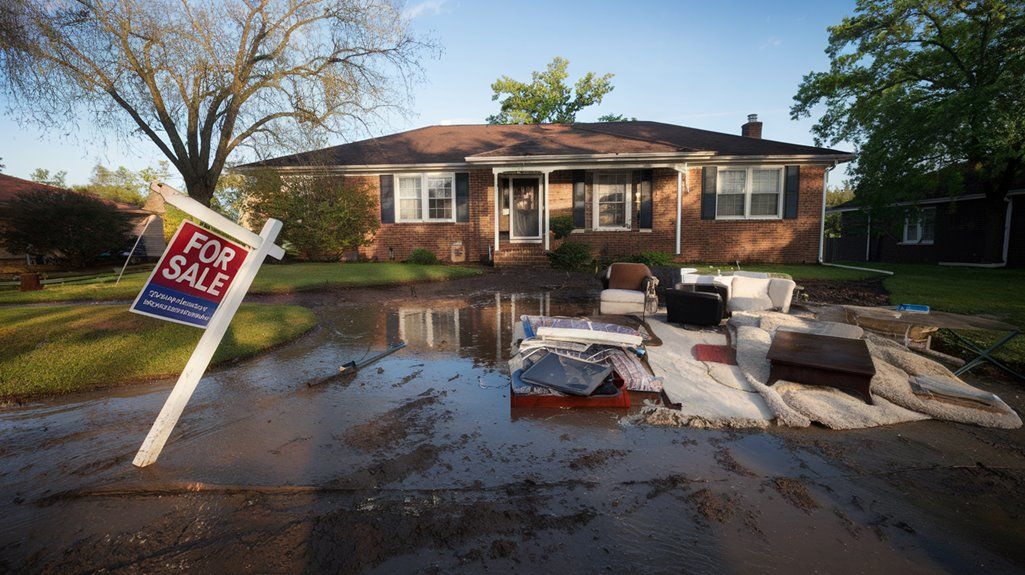
Selling a flooded house as-is means transferring ownership without making any repairs to water damage. You can save significant time and money by choosing this selling option.
This approach eliminates the need for costly restoration work. You will avoid dealing with multiple repair contractors. If your insurance doesn’t cover all damage costs, selling as-is becomes more appealing.
This option attracts professional buyers who specialize in renovating damaged properties. We often see investors ready to purchase flooded homes quickly. When you sell as-is, you won’t need to wait for repairs to complete.
You should expect lower offers compared to fully restored properties. Yet this trade-off brings immediate financial relief. If you want to move forward quickly, this option removes renovation stress. This solution works best for homeowners who need a fresh start.
Why Selling to a Cash Home Buyer is a Smart Option
Cash home buyers offer three key benefits when selling flooded properties. You won't need to repair or renovate your flood-damaged house before selling it. The buyers will purchase your property exactly as it stands today. If you choose traditional buyers, they might demand extensive repairs.
We understand that speed matters when dealing with water-damaged homes. Cash buyers can complete the sale within days or weeks. Bank financing delays won’t affect your transaction since these buyers have ready funds.
The process becomes much simpler with cash buyers. You can skip home inspections and bank appraisals entirely. This direct approach helps preserve your property value. Since water damage worsens over time, quick sales protect your investment.
Traditional sales often face many roadblocks and delays. Cash buyers eliminate these common obstacles for homeowners. If you want to avoid stress, this option ensures a guaranteed and fast sale.
How Cash Buyers Simplify the Process
Cash buyers transform property sales into a simple, fast process without bank involvement. You can expect a quick response after submitting details about your flooded house. We eliminate the need for long bank approvals and repair discussions. This direct approach saves time and reduces stress for property owners.
The steps are clear and simple. You begin by sharing basic information about your property. A cash buyer will schedule one viewing of your house. If you accept their offer, closing can happen within two weeks.
We take care of all legal documents and most closing expenses. This support makes the transaction much easier for sellers. You will avoid common real estate market delays and complications.
If you choose cash buyers, you can skip the traditional property listing process. So there’s no need to prepare your flood-damaged home for multiple showings. When speed matters, cash buyers offer the fastest path to selling your property.
Jay Primrose Properties Buy Flood Damaged House As-Is
Jay Primrose Properties offers fast cash for flood-damaged houses in the Tacoma region. We understand the stress that comes with managing water-damaged properties. You won’t need to handle complex repairs or deal with lengthy insurance claims. This direct buying process helps homeowners avoid traditional selling challenges.
If your house has suffered from flooding, we will purchase it in any condition. Our team moves quickly to assess properties and make fair cash offers. You can skip all renovation work and complicated paperwork with our simple process. We serve homeowners in Puyallup, Spanaway, Milton, and Lakewood.
When floods strike, immediate solutions become crucial for property owners. This service removes the burden of finding contractors or managing repairs. If you choose to work with us, the entire process will be straightforward. We aim to provide quick relief for homeowners facing water damage issues.
Give us a call anytime at 253-697-0007 or fill out this quick form to get started today!
Get A Fair Cash Offer On Your House

About the author
Justin Baker
Justin Baker is the founder of Jay Primrose Properties, a leading cash home buying company based in Tacoma, WA. With a passion for real estate investing, Justin has helped numerous homeowners in the Pacific Northwest region sell their homes quickly and hassle-free. Justin believes that buying and selling real estate should be a seamless process and works tirelessly to ensure that his clients have a stress-free experience. With a deep understanding of the local real estate market and a commitment to exceptional customer service, Justin has established himself as a trusted and reliable cash home buyer in Tacoma and the surrounding areas.

